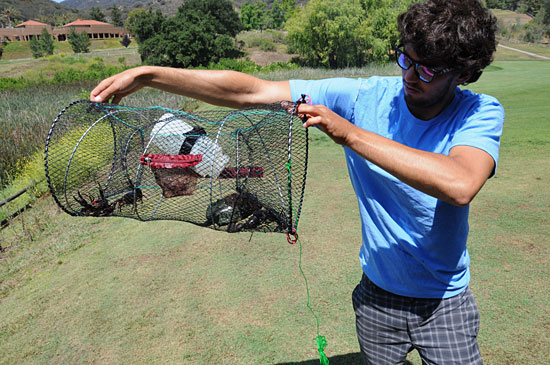Taking a greener course in Malibu
August 21, 2014

The environmentally-friendly makeover of the Malibu golf course will include a new conference facility.
After eight years of start-and-stop planning and negotiations, the Board of Supervisors this week teed up some good news for golfers in Malibu.
A major—and environmentally state-of-the-art—renovation was unanimously approved on Tuesday for the Malibu Golf Club, a public 18-hole course in the Santa Monica Mountains that has been among the area’s local secrets for generations.
Backed by a group of Silicon Valley-based investors and tucked into a canyon just off of Encinal Canyon Road, the project would modernize the now-fraying and nearly 40-year-old course, maintaining it for the public, and adding a retreat and conference center.
Some 450 acres of native habitat on the 650-acre site would be donated as open space to the National Park Service, and local ponds and creeks would be cleansed of invasive species as part of the project.
The golf course, meanwhile, would be redesigned to save water and make room for new LEED-platinum construction.
“We’re going to have solar arrays and green roofs [planted with vegetation], and the golf course itself will be much more playable and fun,” said Tom Hix, managing director of Malibu Associates, LLC, the Silicon Valley-based group of investors behind the project.
Although the project—which developers hope to open in 2017—still awaits approval later this month on a coastal development permit, the Board vote was its biggest hurdle. The golf course, which has changed hands numerous times, was built in 1977 by a Japanese religious group. Its renovation has been on the drawing board, off and on, since 2006.
Part of the delay stemmed from the 2008 recession. “We kind of sat on our hands after the economy crashed, waiting to figure out where the world was going to go,” Hix said.
But there also were community concerns about public access and environmental impact that forced developers to rethink and scale back the proposal.
The resulting $110 million plan stays within the existing construction footprint, but markedly de-escalates the environmental impact while adding facilities for the Malibu Institute, a private conference center and educational retreat.
The Institute, which will be run in association with USC, will host sports-oriented and educational gatherings for the public and for university, corporate, athletic and charitable organizations. It will include 40 bungalows to accommodate up to 320 overnight guests.
Drought-tolerant grass, a smart irrigation system, an on-site wastewater treatment plant, a grey water recycling system, three reconfigured holes of the golf course and other additions are expected to turn the course—now a water guzzler—into a model of conservation. (Click here for a “before and after rendering of the Fifth Hole.)
Solar panels on the parking lot shade structures will generate most of the facility’s energy. “Dark Skies” lighting will be installed to cut light pollution, the parking lot will be outfitted with charging stations for electric vehicles and shuttle vans for visitors will reduce the traffic impact.
An ancillary project will improve the water quality and habitat of Trancas Creek, which is downstream from the golf course and infested with non-native species. The invaders—which include largemouth bass, crayfish (which have run amok) and various other fish and grasses—appear to date back to a time when the property was occupied by a hunting lodge and the ponds were artificially stocked with fish for sportsmen, said Lee Kats, a Pepperdine biologist who has spent more than 20 years studying the area’s ecology.
“The Trancas Creek is one of the more important perennial streams in the Santa Monica Mountains, and its headwaters are on that golf course property,” said Kats, who will help drain and restore the waterways on the property as part of the project.
“That stream has some rare and delicate organisms inhabiting it, and they’re in trouble because of those invasive species. So this is one of the more exciting projects I’ve been involved in as an ecologist.”
The proposal passed without comment at this week’s Board meeting, though the breadth of support was striking during earlier stages of the planning process.
At a Board meeting in June, for instance, the sole opposition came from a hospitality workers’ union, which was concerned about the lodging elements at the retreat.
“They’re going to improve the golf course, and it’s important that we have opportunities like that,” Kats said. “But this is also one of those situations where I think we can have the best of both worlds.”

The proposed plan calls for the removal from streams of invasive species, such as non-native crayfish, seen here sharing a net with a Western pond turtle.
Posted 8/21/14












 405 bridge work causes a stink
405 bridge work causes a stink
